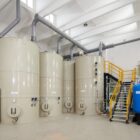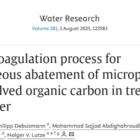Thickening
Thickening is a process for reducing the water content in sludge and concentrating solids in industrial wastewater treatment and sewage sludge treatment. It is used to reduce the volume of the sludge content, thereby increasing the efficiency of subsequent dewatering and drying processes and reducing disposal costs. Thickening is used in








